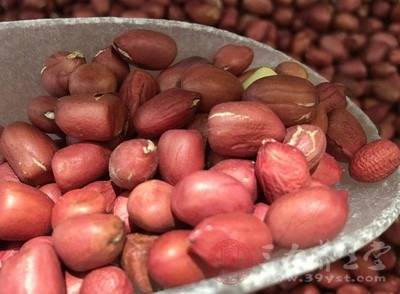Due to the special nature of their constitution, diabetic individuals should be very careful in their diet to avoid inadvertently consuming foods that could increase the sugar content in their bodies, leading to further deterioration of their condition. Therefore, diabetic individuals need to pay close attention to their diet. However, some common foods are still consumed unknowingly by diabetic individuals. Let’s understand which foods diabetic individuals should not eat.
Foods Diabetics Should Avoid
1. Peanuts and Seeds
Peanuts and seeds are high-calorie, high-fat foods, such as peanuts, seeds, and walnuts. They contain several times more calories than an equal weight of pork and even more than desserts. Consuming them in large quantities is not conducive to maintaining body weight and controlling blood lipids, indirectly affecting blood sugar and blood pressure control.
2. Avoid Sweets
Avoid desserts, do not eat rice to full capacity, and do not overindulge in fruits. Avoid consuming sugary foods and many types of fruits because glucose and sucrose are rapidly digested and absorbed, leading to increased blood sugar levels. Also, consume fewer foods with high carbohydrate content, such as sweet potatoes, potatoes, and lotus roots; it’s best to avoid alcohol.
3. No Alcohol
Alcohol consumption is a habit for some people, including a considerable proportion of diabetic patients. Alcohol consumption has a certain impact on the control of diabetes, the occurrence and development of complications. Therefore, diabetic patients are better off avoiding alcohol. If they must drink, it should be in small amounts of low alcohol concentration beer, fruit wine, and should avoid drinking on an empty stomach. It is worth noting that individuals with severe diabetes combined with liver and gallbladder diseases, especially those using insulin and oral hypoglycemic drugs, must strictly abstain from alcohol.
4. Absolutely Avoid Sugary Foods
This mainly refers to foods that contain a large amount of simple sugars (such as glucose, sucrose). Because they contain a lot of sugar, they directly affect blood sugar levels, which is very detrimental to the condition. Examples include white sugar, brown sugar, rock sugar, glucose, maltose, honey, chocolates, toffees, fruit sugar, candied fruits, canned fruits, soda, various fruit juices, sweet drinks, ice cream, sweet biscuits, cakes, fruit jams, sweet bread, and various sugary pastries.
5. Limit High-Fat Foods
Limit high-fat and high-cholesterol foods. Diabetic individuals are prone to hyperlipidemia, which is the basis for various chronic complications; therefore, cholesterol intake must be strictly controlled. Foods high in cholesterol include animal oils, butter, cream, fatty meat, animal organs and brains, egg yolks, and preserved eggs.
6. Limit Fried Foods
Consume less fried, pan-fried, and oily foods, as well as high-fat foods like pork skin, chicken skin, and a variety of nuts (such as peanuts, seeds, cashews, pine nuts, walnuts, etc.)
7. Avoid Heavy-Tasting Foods
Diabetic individuals should consume a diet that is as bland as possible without being too salty. Avoid processed or pickled foods and opt for cooking methods like stewing, baking, grilling, steaming, boiling, and cold mixing, and avoid using methods like thickening with flour, sweet and sour sauces, honey sauce, eggplant sauce, and vinegar glazing.
Diabetes Dietary Considerations
1. Adjust Meal Frequency
For gastroparesis, multiple small meals throughout the day are advised. Divide the usual three meals into six or seven smaller meals for diabetic patients. Prepare snacks post-meals to prevent hunger and reduce post-meal high blood sugar levels.
2. Modify Food States
For gastroparesis, solid food emptying is more obstructed than liquid food, so it’s ideal to blend solid foods or consume more liquid foods. Occasionally, complete dependence on liquid foods may benefit in improving gastrointestinal symptoms and controlling blood sugar.
3. Adjust Food Components
Diabetic patients with gastroparesis have reduced digestive movements, leading to prolonged gastric emptying. Therefore, reduce the content of undigested fiber in the diet and be cautious with fibrous vegetables like celery, Chinese cabbage, and potatoes, as they may lower postprandial blood sugar but can cause gastrointestinal reactions.
4. Weigh-Based Therapeutic Nutrition
All required foods should have inedible parts such as skin, roots, bones removed before being weighed, processed, and cooked. This rationalizes calorie intake control but can be cumbersome for diabetic patients regarding dietary adjustments.
5. Varied and Rich Diet
Choose whole grains as the main staple for diabetes patients, balance coarse and fine food combinations. Consume plenty of vegetables and fruits, some dairy drinks, fish, and lean meats regularly, but control the daily intake. Focus on light vegetable-based dishes, minimize oil usage, exercise regularly to maintain weight, drink plenty of water daily but limit alcohol consumption.
6. Supplement Protein with Soybeans
Soybeans contain a good amount of quality protein without cholesterol and have lipid-lowering effects, making them a substitute for some animal-based foods like meat. During calorie control, if feeling hungry, consume low-sugar vegetables boiled in water with some seasoning. Vegetables are essential for diabetic patients due to their high dietary fiber and water content, low caloric value, and satiety effect.
In conclusion, in daily life, there are several foods diabetic individuals should avoid. Besides those mentioned above, diabetic individuals should also be cautious with certain foods, avoid overeating, consume in moderation, remember to have small meals frequently, avoid overeating, have a varied and rich diet, and choose more grain-based foods.


